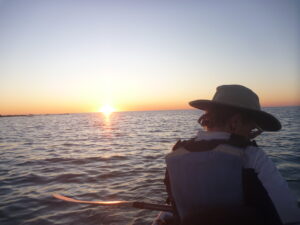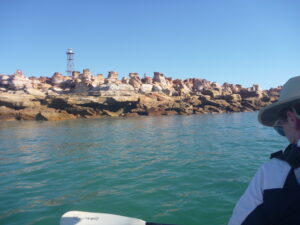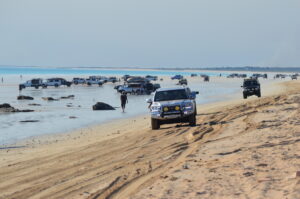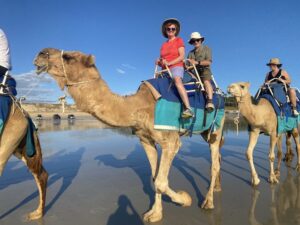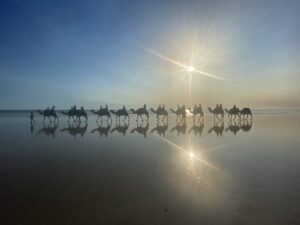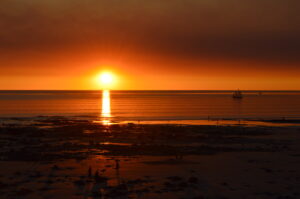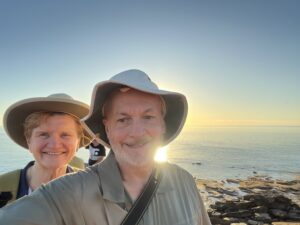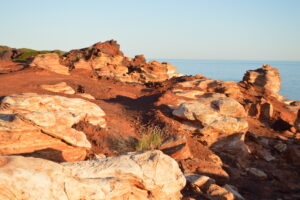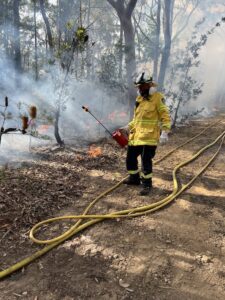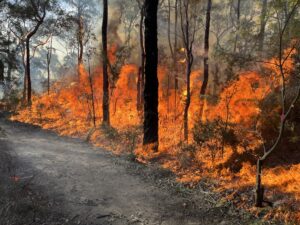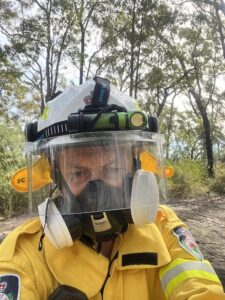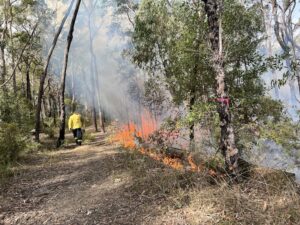Today started off with a visit to Broome Museum: an interesting collection showing amongst other things the appalling dangers faced by early divers, with the all-over diving suits with huge brass helmets. Also the terrible history of the diving masters “black-birding” aboriginal divers – forcing them into slave labour diving for pearls, actually mostly for the pearl-shells, from which to make buttons, etc (Mother-of-pearl).
Then we set off on a boat tour to see the dinosaur footprints. The trip started in an area with more fascinating rock formations.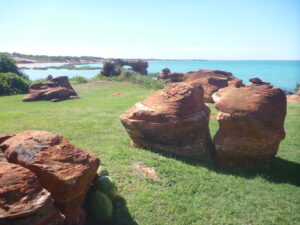
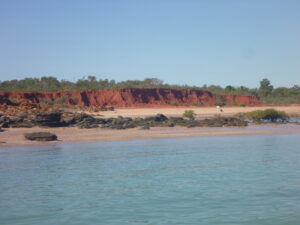
And lovely coloured sand-cliffs. There are also patches of mangrove trees.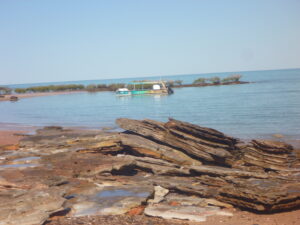
Actually the dinosaur footprints were a little underwhelming, in my view.
Most of them appeared to me to be patches of discoid compressed rock (which is, of corse exactly what they are.
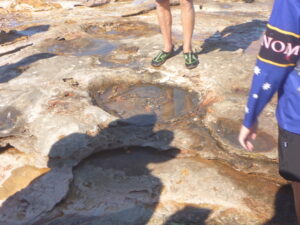
The mud was compressed by these huge creatures (the footprints come from a brontesaurus-type reptile, about 30m long and 12m high), and so resisted erosion enough eventually to be made into ovoid rock patches.
.
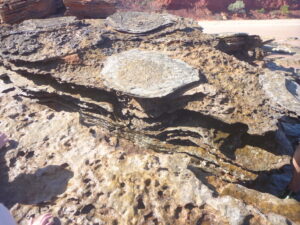
This picture shows a footprint with much of the surrounding rock eroded away.
To me it was a tribute the the people who worked this all out.
We were shown other footprints which were less elephant-like, and more like the prints left by a huge bird.
.
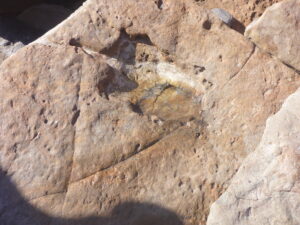
This is the print of large carnivorous dinosaur, apparently.
Actually the boat tour was really good, as we learned all about the Roebuck Bay ecosystem and much about the way that this important area has been changed into a marine reserve and National Park. There are lots of wading birds, kites, ospreys, ducks, geese and others.
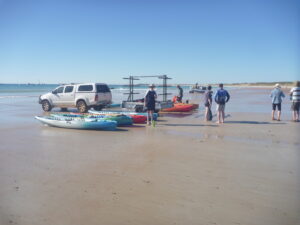 We did some kayaking this afternoon though.
We did some kayaking this afternoon though.